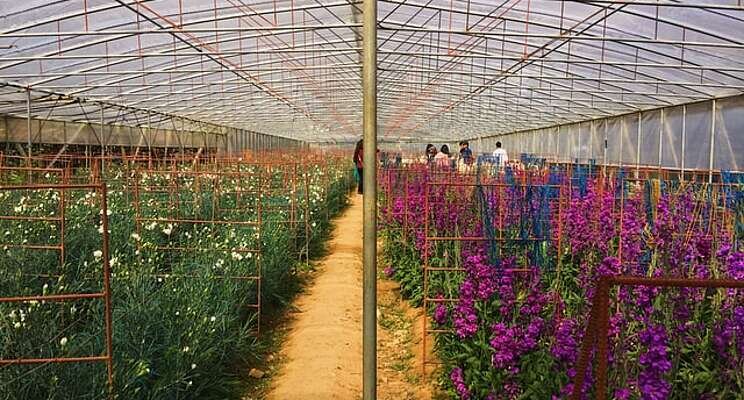Insider insights on the future of automation in horticulture
Added on 09 May 2022

In this exclusive interview with Greenhouse Grower Senior Editor Brian Sparks, Dijkshoorn shares a few of his insights.
Brian Sparks: Looking at the big picture of greenhouse technology, what are the most significant innovations that you've seen over the past couple of years?
Edwin Dijkshoorn: Definitely more robotics, and that includes transplanters. What we have to see now in our industry is the realization that you actually have a plant factory, and the minute you describe it in such a way, then your mindset changes. When you look at a car factory or a computer chip factory, you don't see that many people because all the labor that was involved in that was just cumbersome. The more we look at labor shortages, I think we are going to see changes with robotics being applied more to plants, which we already see in Europe. A robotic arm used to cost close to half a million dollars.
Now you can buy a used one for much less, and it should still function just as precisely as it did on day one. The minute we start realizing as an industry that robotics and hands-free growing is a real possibility, we can start to focus on the logistics and handling side of things.
Sparks: Do you see that hands-free approach being consistent across the greenhouse industry regardless of what type of crop you're growing?
Dijkshoorn: I think it's definitely possible. In ornamentals, you have a lot of different varieties. But let's not shut our eyes to the possibility; let's come up with solutions that are manageable. Vegetable greenhouses have made big leaps in the last decade towards hands-free growing. If you look at some of the lettuce systems out of Finland, they are phenomenal. Those are a bit more monocrop, but we see things happening in Holland where growers are implementing more robot arms, mainly for packaging. A lot of that work requires a lot of extra people. Most of the time in the ornamental industry, we focus on the logistics of getting these plants out of the greenhouse with manual labor. But there are systems in ornamentals that can save a tremendous amount of labor. We are working with one grower on a conveyor system to bring baskets to his hanging basket system.
Another grower used to run 24 to 28 baskets per minute on a production line. With our belts in place he's up to 50 now, and that's only because his potting machine cannot go faster.
Sparks: Going back to your point about buying used equipment, we know price point is always a concern. Growers may see a new piece technology they like, but are not sure they can afford it. Is the used equipment market something that is viable in this market?
Dijkshoorn: In Holland, there is a vibrant used equipment market. I can name three companies that are constantly selling used equipment and it's selling like crazy. For example, a grower may have bought a transplanter five years ago to cover 10 acres. If he's now at 20 acres, that transplanter might not be fast enough for him, but it's still a good transplanter. If he buys a new one, then you have a piece of equipment that is still perfectly suitable for another grower. That's Holland, and here in the U.S., it is more difficult because of the transportation issues. And I think that's what holds us up a little bit now, unless you have a piece of equipment that's for sale fairly close by and one of your own trucks can pick it up. Nevertheless, I do feel this market will pick up more and more.
Photo by Ally Asuncion on Unsplash
Source: Greenhouse Grower
More news















